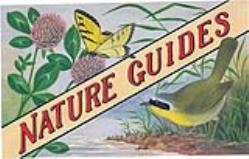Guide to Taxidermy



Book title: Guide to Taxidermy
Author: Charles K. Reed, Chester A. Reed
Editor: Charles K. Reed
Publication year: 1908
Copyright: June 10, 1908
Printer:
Format: 5 ½ x 7 ½ (14 X 19 cm.)
Type of cover: Fabric cover. The title is in gold letters and the authors’ names are in black. A white-head eagle drawn by Chester A. Reed takes up the center of the cover page.
Number of pages: 310 pages
Retail price in 1908: 1.50$ (us)
Mailing cost: 0.15$
Chester had been working for the family enterprise for 12 years. In 1908, he accepted the position of curator at the Worcester Natural History Society in Worcester. His work didn’t allow him to keep being as active in the family enterprise owned by his father (a taxidermy store). But a new kind of collaboration started between the father and the son.

1908 was an important year for Charles K. Reed. He gradually stopped working as a taxidermist to focus on editing guides in ornithology (Nature Guides) with his son Chester. He also moved his store to 238 Main Street in Worcester that year.

It was a great occasion for Charles to publish, with his son’s help, a book revealing over 35 years of experience in taxidermy. The book unveiled secrets that you could only learn with experience. He was already recognized as the best taxidermist in the area. He invented a convex glass dome to cover bird mountings in taxidermy (1889). In 1907, he was awarded the gold medal for the category “Ornamental Taxidermy – Game Birds under Convex Glass” at the Jamestown Exposition.
The preface of the book is especially interesting. It follows a new ideological trend of the time by highlighting the importance of bird conservation, while justifying the role of taxidermy. He even suggests that every community should have their own taxidermist to preserve the general fauna.
Chester, co-author of the book, had the expertise and experience of writing such books, and the artistic talent for creating many drawings, thus giving the book an edge for learning taxidermy by correspondence.

There were 14 informative chapters in the book. The first chapter mainly talked about the way to use a weapon to shoot a bird, the use of dogs to collect specimens, and when and where to find birds.
Chapters 2 through 9 explained in great detail the way to handle birds, animals, heads, fish, reptiles, insects and egg collections.
In chapter 10, he showed the materials and tools used by a taxidermist, as well as the dimensions of the eyes for the different species.
Chapter 13 provided a price list of mounts for some animal species. The last chapter was a comprehensive list of North American birds, organized by the number and name of the birds as defined by The American Ornithologist’s Union, including the price for an egg, a skin or a mount for each species.
In 1908, a “California Vulture, Gymnogyps Californianus” egg was worth $100.00 US, a skin was $40.00 and a mount $50.00.
The last pages contained a few ads for books sold by Charles at his store. Obviously, there were lots of Chester’s books.